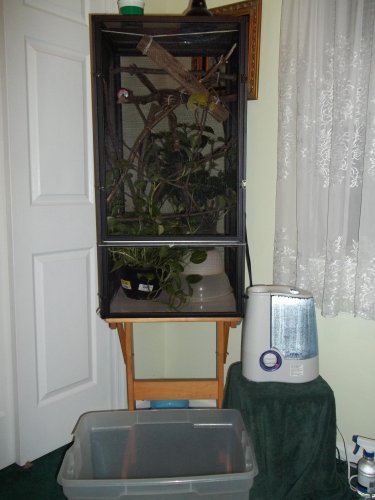Red Bishop
New Member
Any ideas on keeping up the RH? I have a 18" x 18" x 36" screened enclosure with live plants, automatic misting system 3x/day for 5 minutes. The RH goes to 55 - 60% when misting, but after 5 minutes it is back in the low 40's. I was going to get some plexiglass for a couple of sides, but used plastic wrap to see if it would help and it really hasn't changed much.
Also thought about a humidifier. For those that use these, do you run them all day or set on a timer? My guess is that if it were on a timer, it would be no better than the misting system.
I have this humidity gage:http://www.reptilesupply.com/product.php?products_id=655
Does it matter where it is located in the cage? I have it on the left side, high in the cage.
Thanks for any input.
Also thought about a humidifier. For those that use these, do you run them all day or set on a timer? My guess is that if it were on a timer, it would be no better than the misting system.
I have this humidity gage:http://www.reptilesupply.com/product.php?products_id=655
Does it matter where it is located in the cage? I have it on the left side, high in the cage.
Thanks for any input.







